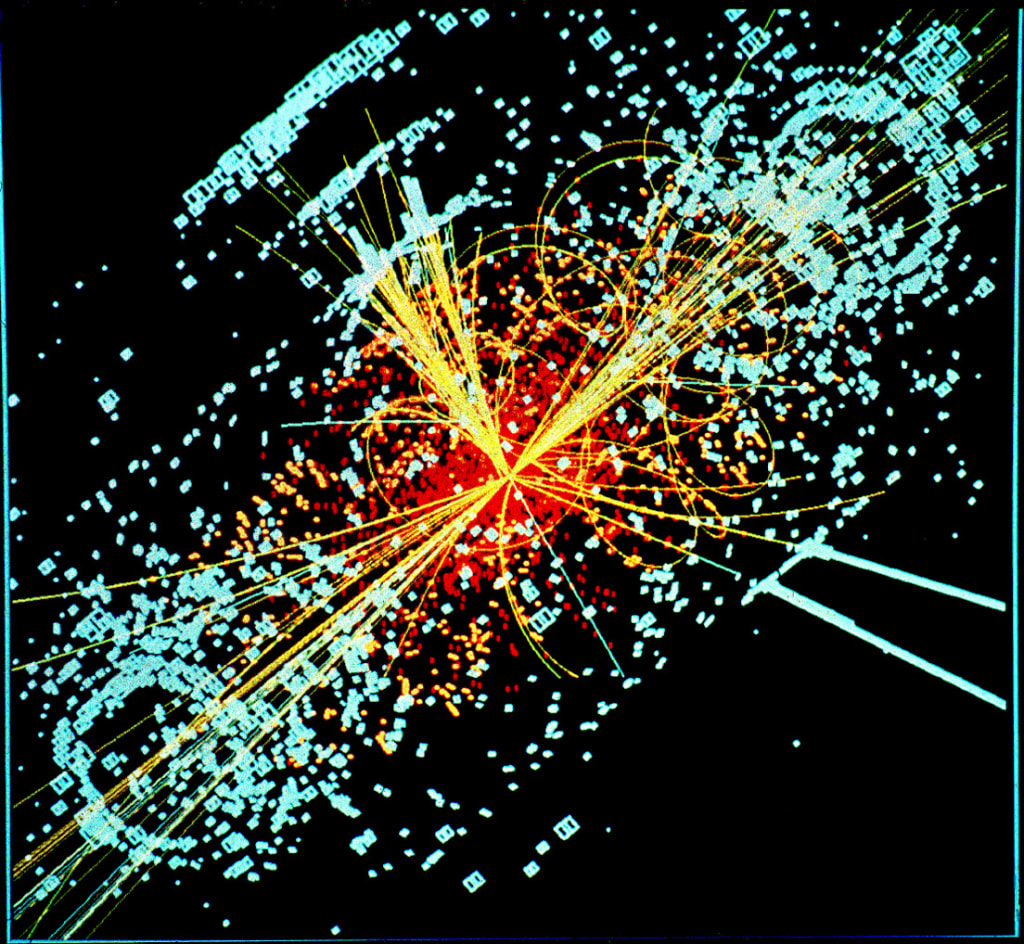Connecting the Simulation Theory and Transcension Theory
Are there plenty of aliens at the bottom?

As scientists gather more evidence, the idea that we are living in a simulation is beginning to look less like a fringe theory among sci-fi nerds and more like a legitimate explanation for the universe. The simulation theory, however, might end up connecting yet another fringe theory that attempts to explain the seeming silence of the universe -- a silence generally referred to as Fermi’s Paradox.
The Simulation Theory is ancient. Plato -- and his chained cave-dwelling slaves -- was an early advocate, but it recently gained modern academic footing when Nick Bostrom, a University of Oxford philosopher, published the paper “Are You Living in a Computer Simulation.”
Bostrom says that either no human-level civilizations make it to the posthuman stage because they blow themselves up, or if they do hit posthuman, they decide they don’t want to build high-fidelity simulations. But there’s another posthuman postulate: It could be that once a civilization hits posthuman stage, they do build high fidelity simulations and -- with a slight logical step -- there’s a good chance that we are in that type of simulation. Bostrom strongly suggests the last proposition is the strongest of the three.
According to Bostrom, the odds are -- nonacademically put -- pretty dang good that you do live in a computer simulation.
A Big, Small Deal
John Smart, another philosopher, wasn’t really attempting to find out if the universe is a simulation, he was trying to find out why we live in such a goddamn quiet simulation when he hit upon the Transcension hypothesis as a possible answer to Fermi’s Paradox.
In 1950, Enrico Fermi was on his way to lunch with a bunch of physicist friends at the Los Alamos National Laboratory. As we all know, physicists have an incredible sense of humor, so this group began to joke about a recent wave of UFO sightings and a newspaper comic blaming missing municipal trash can lids on aliens. Later Fermi goes all buzzkill on the subject and asks about the existence of aliens, “Well, where are they? Where is everybody?”
Fermi argues, if the universe is crammed with 70 sextillion -- a precise mathematical term for a shit-ton -- stars in the universe and exponential shit-ton number of planets among those solar systems and there happens to be life on this one, then shouldn’t the universe be up to its astronomics in alien civilizations.
When everyone stopped laughing, they realized, hey, maybe Enrico’s got a point.
A lot of people rose to Fermi’s challenge. One depressing answer is that we are alone. Another suggestion is the spooky -- depending on what side of the probe you are on -- answer that they visit us all the time in their UFOs, we just can’t see them, or admit that we can see them. The Zoo hypothesis is that idea that aliens know we are here, but have agreed not to interfere with our progress, or -- if you watched the Kardashians anytime recently -- our lack of progress.
Smart, however, puts forward one other reason for Fermi’s Paradox -- and it’s connected to the Simulation theory. Alien civilizations aren't here because instead of going outside to explore, they go inside.
“If the transcension hypothesis is correct, inner space, not outer space, is the final frontier for universal intelligence,” says Smart. “Our destiny is density.”
Physicist Richard Feynman explored this, too, in his famous lecture, "There’s Plenty of Room at the Bottom."
“But there is plenty of room to make them smaller,” Feynman said. “There is nothing that I can see in the physical laws that says the computer elements cannot be made enormously smaller than they are now. In fact, there may be certain advantages.”
To blend the simulation and transcension theories, we need to take one more step. We can imagine that aliens who begin to explore the very small, begin to experiment in this inner space. What would they do? Likely, the aliens would create virtual spaces and virtual worlds, or, in effect, simulations. Most believers in suggest our primitive attempts at virtual reality show the plausibility of this idea. Developers have recently created systems that can generate trillions of realistic virtual worlds -- and we are just at the beginning stages of this technology that will eventually lead to completely immersive realities where “real,” augmented, and virtual seamlessly blend together.
And that just opens more questions: Could our universe be -- merely -- one of those simulations and, once recognized and once mastered, lead to more simulations? Are we folded into one of those virtual spaces in some sort of fractal cosmic onion? And let’s toss one more controversial theory into the mix -- Is the Technological Singularity hypothesis made famous by philosophers such as philosophers and scientists like John von Neumann, Ray Kurzweil and Vernor Vinge serve as a bridge between the two? In other words, does our increasing power to master technology inevitably lead to smaller, more powerful technology that creates wilder, more expansive simulations?
About the Creator
Matt Swayne
I'm a science and research writer with an interest in future and fringe technologies.
Reformed journalist and marketer.






Comments
There are no comments for this story
Be the first to respond and start the conversation.